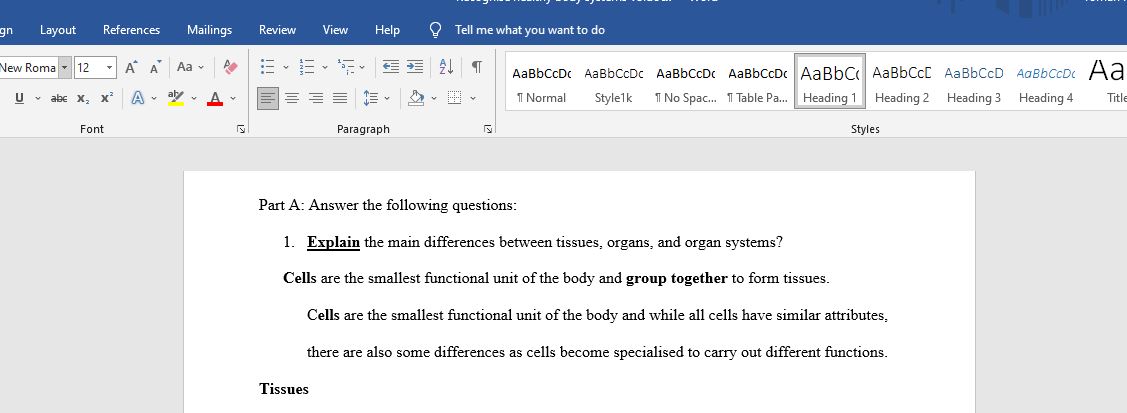Recognize healthy body systems.
Part A: Answer the following questions:
1. Explain the main differences between tissues, organs, and organ systems?
Cells are the smallest functional unit of the body and group together to form tissues.
Cells are the smallest functional unit of the body and while all cells have similar attributes, there
are also some differences as cells become specialized to carry out different functions.
Tissues
Groups of cells with similar structures and functions form tissues that usually have specific functions.
Organs
An organ is a small to large structure that contains different tissues which work together to complete
specific body functions.
2. Explain how the nervous system controls body movement?
The nervous system uses an intricate series of chemical and electrical circuits to send electrical signals
through nerves from the body to the brain (sensory nerves or sensory function), the brain interprets this
information and then sends electrical signals through nerves back to the body causing some function or
task to occur (motor nerves or motor function).
3. Explain how oxygen gets from the air in the lungs to a small body cell in your finger?
4. The oxygen we inhale travels to the lungs. In the lungs the blood will "exchange" carbon dioxide
(which we then exhale) and will transport oxygen we inhaled, binded with haemoglobin (which is
founded in red blood cells) to every part of the body, every tissue.
5. Explain how carbohydrate in food gets from the mouth to the blood?
Answer preview:

word limit:4500
